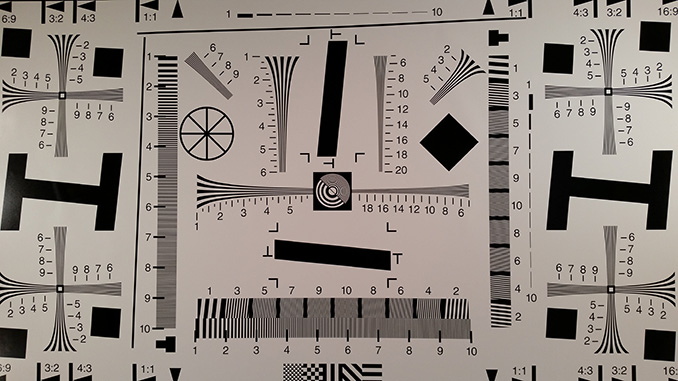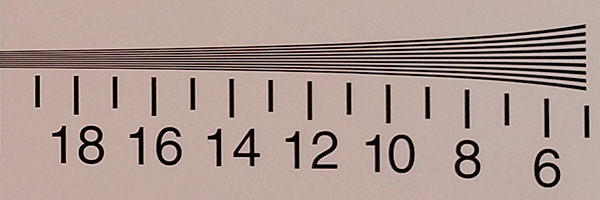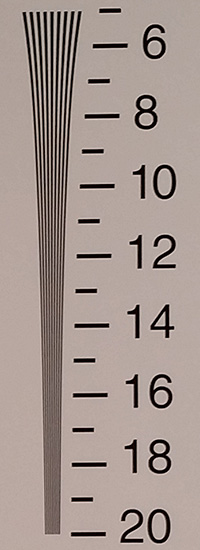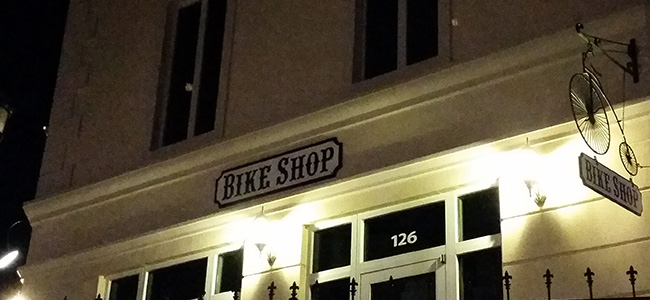Samsung Galaxy S 5 Review
by Anand Lal Shimpi & Joshua Ho on April 8, 2014 12:00 AM EST- Posted in
- Smartphones
- Samsung
- Mobile
- Galaxy S 5
Camera Architecture & Still Image Analysis
Samsung's real potential has yet to be realized as a highly vertically integrated silicon and device house. The Galaxy S 4 for example still relied on a Qualcomm SoC with a Sony sensor for the rear facing camera. While the GS5 continues to leverage Qualcomm's silicon, Samsung did transition to its own sensor for the rear camera module as well as the front facing camera.
The front facing camera remains 1080p, despite competitors like HTC moving to 5MP. The front camera uses a 16:9 sensor with 1.12µm pixels shooting at 1080p.
| Samsung Galaxy S 5 Camera | ||||
| GS5 | ||||
| Front Camera | 2MP | |||
| Front Camera - Sensor |
S5K8B1YX (1.12µm, 1/7.3") |
|||
| Front Camera - Capture Resolution | 1920 x 1080 | |||
| Front Camera - Aspect Ratio | 16:9 | |||
| Front Camera - Focal Length | 1.2mm | |||
| Front Camera - Max Aperture | f/2.4 | |||
| Rear Camera | 16MP | |||
| Rear Camera - Sensor |
S5K2P2XX (1.12µm, 1/2.6") |
|||
| Rear Camera - Capture Resolution | 5312 x 2988 | |||
| Rear Camera - Aspect Ratio | 16:9 | |||
| Rear Camera - Focal Length | 4.8mm | |||
| Rear Camera - Max Aperture | f/2.2 | |||
The rear camera is the interesting one as it uses Samsung's own 16MP 16:9 sensor. This makes the GS5 and M7/M8 the only two modern shooters we have with 16:9 rear facing sensors. The GS5 unfortunately doesn't move to larger pixels, remaining at 1.12µm. To somewhat improve low light performance, Samsung is using its own ISOCELL technology to reduce crosstalk between pixels by introducing additional barriers between individual pixels. The video below does a decent job at summarizing what we know about ISOCELL:
Unlike Apple and HTC, there's no dual-color flash on the GS5 - just a single LED unit.
As always we turn to a collection of controlled test shots and live scenes to evaluate the GS5's camera quality.
Spatial Resolution
We'll start by measuring the rear facing camera's ability to resolve fine details by shooting at an ISO12233 test target. For now we'll be looking at horizontal and vertical resolution using the sagittal and tangential lines in the upper right of the center of the test chart:

ISO12233 captured by Galaxy S 5
The gallery below has links to the original chart captures for all of the phones compared in this review:

The GS4 already did well in this test, easily resolving the entire length of sagittal lines. The GS5 maintains slightly more detail past the 18 mark (units of line pairs per image height). The iPhone 5c and 5s do reasonably well here but can't resolve detail as well at the very left edge of the crop. Google's Nexus 5 has similar struggles, although nothing is anywhere near as bad as HTC's M8. Here we see the real limits of HTC's 4MP UltraPixel sensor as there's serious aliasing around the 12 mark. Sony's Xperia Z1s running in its native 20MP mode on the other hand is the clear winner here.
You can see full 1:1 resolution crops in the gallery below:

The story is unchanged if we look at the tangential crops as well. The GS4 and GS5 remain among the upper contenders in this space, losing out only to Sony's Z1s. Interestingly enough the GS5's image appears to be softer than what the GS4 produced. We'll have to spend some more time with Samsung's ISOCELL sensor to really get a feel for the images it produces.
Outdoor Scenes (Day & Night)
We grabbed test shots from four different locations using the GS5 and its immediate competitors. I've included all of the originals in the galleries below, but let's take a look at crops from a couple of them first.
I'll start with a low light test shot as that's one of the more challenging environments for such a sensor with such tiny pixels. Here we'll be able to see just how much ISOCELL buys us:

The GS5 shot this scene at 1/15s, ISO 2000. The GS4, by comparison, kept the shutter speed the same but ran at ISO 1000. The GS5 is naturally brighter as a result, but without substantially more noise. The image is relatively usable. Toggling picture stabilization (the new word for night mode on the GS5) trades off noise for exposure length, although Samsung obscures the latter in its exif data. When shooting without a tripod, longer exposure times aren't desirable (particularly without OIS).
The GS5's low light performance obviously pales in comparison to devices with larger pixels like the M8 and especially the iPhone 5s. There's an obvious tradeoff here. Samsung delivers clearly better spatial resolution (as seen from our ISO12233 test shots), while HTC on the other hand offers better low light performance. Apple finds itself in the middle of the two with the iPhone 5s. The Xperia Z1s does give us a good example of what you can get from oversampling as we're shooting in the 8MP superior auto mode here.

Moving to the opposite end of the spectrum, this daylight shot gives us an example of where the M8 clearly loses out to the GS5. You lose all details in the tree, and there's quite a bit of noise in the sky on the M8. The GS5 however delivers a substantially better shot.
Lab Scene
The next set of shots use a light controlled lab setup. Here we are immune to natural variances of sunlight and can do some true apples to apples comparisons.

The GS4 and GS5 are pretty close to one another in our scaled/cropped shot. There are some differences in color handling and dynamic range between the two devices. I actually find that there's some loss in detail in the paintbrush on the GS5 compared to the GS4. I've seen a number of situations where aggressive noise reduction on the GS5 seems to mangle detail and deliver a very oil painting like effect, although that's an extreme that we're not seeing here.

The GS5 once again defaults to 1/15s at ISO 2000, compared to the same exposure time but ISO 1000 on the GS4. Here we really see what Samsung's sensor can do as the resulting image goes from unusable on the GS4 to passable on the GS5. The final image isn't particularly great by any means but it's at least usable. If you're looking for ultimate low light winners here there really are only two: the 5s and the M8.
HDR
The GS5 has a very fast and usable HDR mode. You can toggle the mode on directly from the default camera UI (tap the icon on the left side of the display) and you get effectively instant HDR captures:

The GS5's HDR captures do a good job of retaining detail in the shadows while bringing in detail in the highlights.


























































296 Comments
View All Comments
kmmatney - Tuesday, April 8, 2014 - link
I've gone through so many micro USB cables - the lightening connector is certainly something Apple got right.ΔrNTA - Wednesday, April 9, 2014 - link
And the EU want to make all phones have a Micro USB connector as standard. That could be trouble.Arbie - Tuesday, April 8, 2014 - link
I agree: No microSD = No Sale, so the Nexus 5 is not an option.Arbie - Tuesday, April 8, 2014 - link
Yeah, streaming is possible. It's just hugely more expensive and infinitely less reliable than having what you want on an SD card. So what is your point?Asylum1621 - Tuesday, April 8, 2014 - link
When you say "I can see why Samsung would want to optimize for these two cases as they are quite common in regular usage" what is this based on? Usage models show that >90% of commands sent to eMMC during regular usage are 4k random writes. Sequential read and write is rarely used in the system, and most sequential read/write events are not dependent on eMMC having great sequential performance, ie video playback, recording video using built-in camera, etc.kelemvor33 - Tuesday, April 8, 2014 - link
I'd love to see the GS3 in some of these charts to get a good comparison of how the GS line has improved over time. I have a GS3 and my 2 years is up this fall so the GS5 will be an option for me. The GS4 wasn't due to timing so having the 3, 4, and 5 in there would be more beneficial info to have.rrecine - Tuesday, April 8, 2014 - link
Metal does not mean a phone is built better than another phone. Metal is for isheep and magnets.akdj - Wednesday, April 9, 2014 - link
Must not have read...or comprehended the review? Metal is an incredible conductor of heat, a natural 'heatsink' for the 'guts'. See the scores in the M8 vs S5? Consistently higher benchmarks and faster, longer performance without throttling due to the ability of metals to dissipate that heat. Plastic is more insulator than anything. I own the Note 3, had the S3 and original Note as well. Metal, Apple's 'plastic' and all the Nokias I've seen have significantly better plastic build quality than my Sammys. To defend samsung and their use of extremely cheap 'housings' on the high end phones is silly. Kinda the joke of the entire industry. Such cool ideas, fast processing, great displays and digitized screens with styli... Yet they have FINALLY gotten around to improving TouchWiz...a bit more refined this time around, still kinda 'old' looking and heavy with crap you won't use...NOR have they increased or 'bettered' their manufacturing process when it comes to building the phone housing. I'm not saying it HAS to metal, though the iPhone is gorgeous, as are the latest HTCs and XPerias...but plastics can be molded, hardened, shined up and 'feel' solid if done right. Samsung's cheap rear plate is a joke. Nice to access a battery, but I've never owned a second one...my Note 3 will last two days. Nice to have the SD storage. And IMHO they actually did a pretty good job with the N3's 'textured' faux leather design on the black model. I'll hold judgement on this one til I see it...but @ 5.1" it's starting to creep into that Note/Phablet territory...one a bit more niche than the typical user. I love my Note3 but it's a two handed device for everything and anything I do with it. Even after owning one for two and a half years, I still hate using it as a phone. Too damn big. But anymore, talking on our phones is tertiary. MMS,SMS, Facebook and Twitter, emails and texts. So many more efficient ways to communicate. But when you've got to make a call, it's nice to have a comfortable phone. I love the iPhone for a lot of reasons, but a big one is the ease of one handed use. While the N3 has the 4" small screen option, the hardware is still in the same spot so it's kinda useless with the exception of phone dialing or single handed texting.doobydoo - Friday, April 11, 2014 - link
Good post.maecenas - Tuesday, April 8, 2014 - link
"Pretty much all the flagships offer some set of tradeoffs that prevent any one from being the perfect device (iPhone's screen size...)"Not really what I would choose to knock the iPhone - in my opinion the iPhone is about the right size and screen size is a knock against pretty much everyone else. That said, iPhone doesn't allow MicroSD expansion, doesn't feature different screen size options, has the closed Apple environment, charges outrageous prices for storage expansion - there are a lot of less subjective criticisms that can be made.